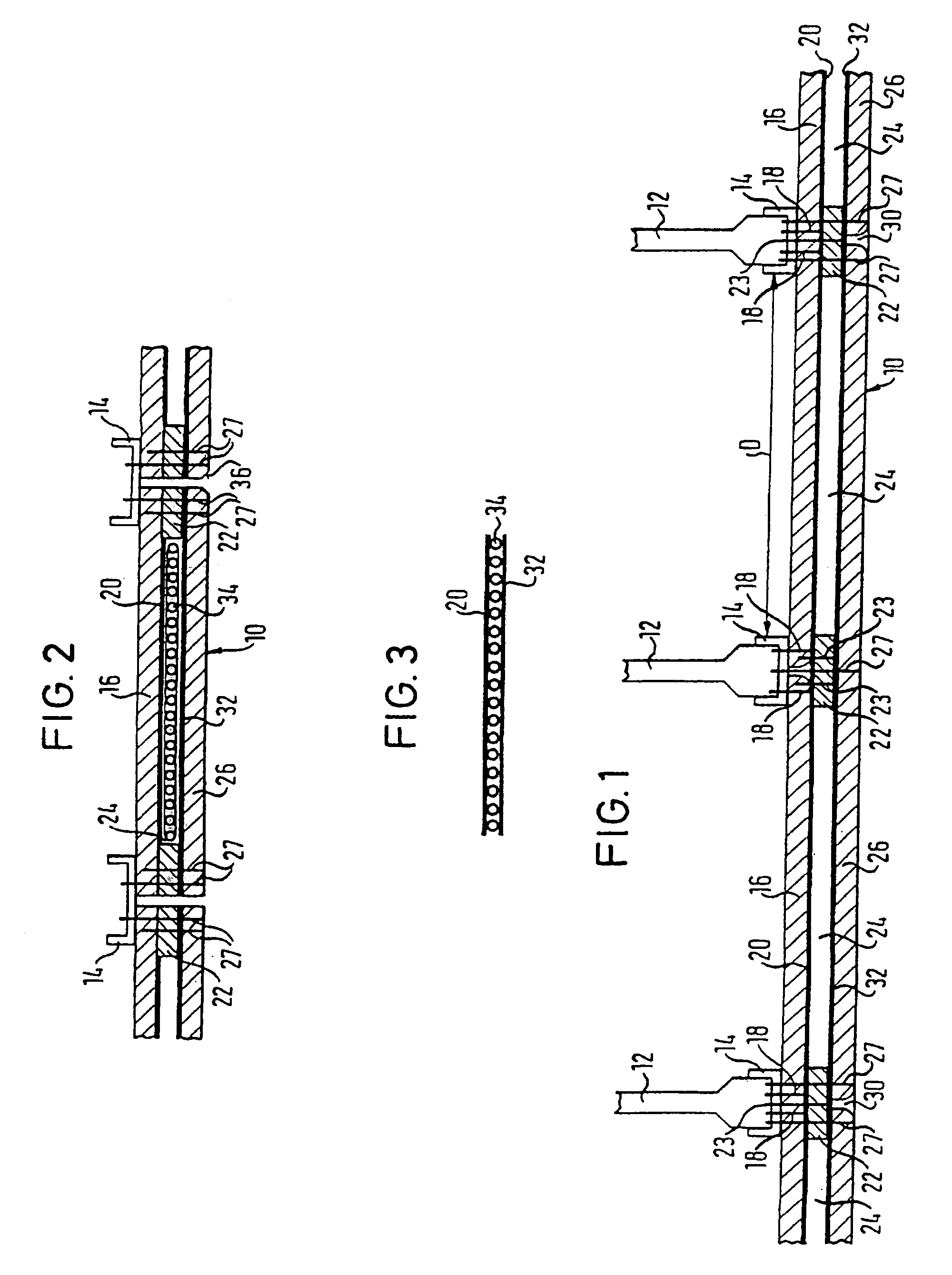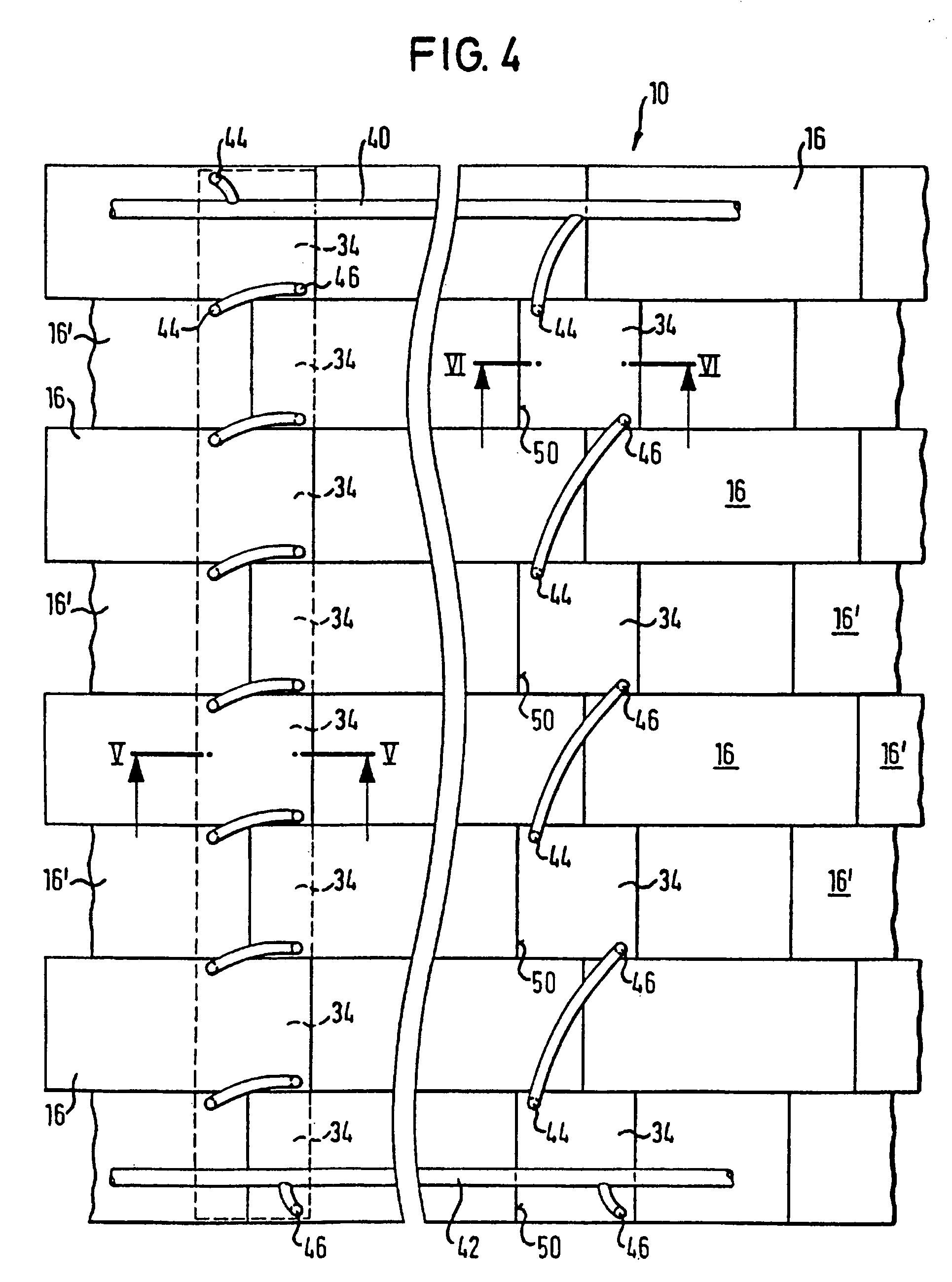Cooling cover, cooling cover components and cooling tubular armature
a cooling mat and component technology, applied in the field of cooling ceilings, can solve the problems of high cooling loss, condensation, unfavorable germ transmission, etc., and achieve the effect of flexible building progress, saving the calculated cooling mat area, and high degree of efficiency in operation
- Summary
- Abstract
- Description
- Claims
- Application Information
AI Technical Summary
Benefits of technology
Problems solved by technology
Method used
Image
Examples
Embodiment Construction
[0037]FIG. 1 shows a part cross-section through a cooling ceiling 10, which is executed in this example as a suspended ceiling. For this hangers 12 are provided which can be secured to a bare ceiling or to an old ceiling. Below these hangers there are located so-called CD sections 14 which serve as carrier rails and which are well known per se, as also are the hangers. In this example the spacing (center-to-center spacing) D from carrier rail to cater rail amounts to a maximum of 625 mm. Sandwich-type plaster board panels 16 with dimensions of 2000 mm length, 1250 mm width and 12.5 mm thickness are secured to the CD ceiling sections 14 from below with the aid of rapid construction screws 18. These have, for example, a length of 25 mm. The invention is not restricted to these preferred dimensions, as quoted. Boards with other dimensions can be used, for example, board thicknesses in the customary range from 9.5 mm to 18 mm can be straightforwardly selected.
[0038]An aluminium foil 20 ...
PUM
 Login to View More
Login to View More Abstract
Description
Claims
Application Information
 Login to View More
Login to View More - R&D
- Intellectual Property
- Life Sciences
- Materials
- Tech Scout
- Unparalleled Data Quality
- Higher Quality Content
- 60% Fewer Hallucinations
Browse by: Latest US Patents, China's latest patents, Technical Efficacy Thesaurus, Application Domain, Technology Topic, Popular Technical Reports.
© 2025 PatSnap. All rights reserved.Legal|Privacy policy|Modern Slavery Act Transparency Statement|Sitemap|About US| Contact US: help@patsnap.com



